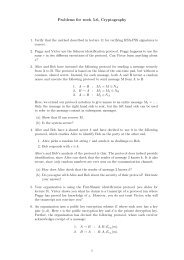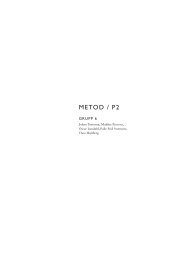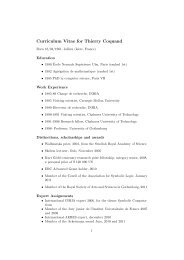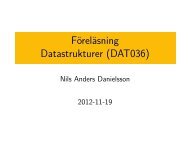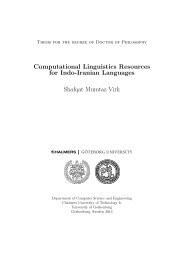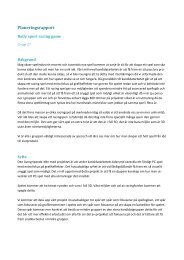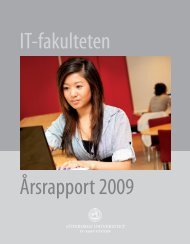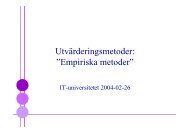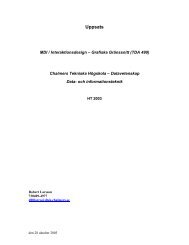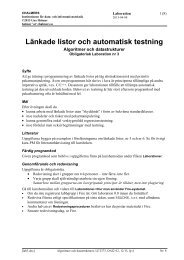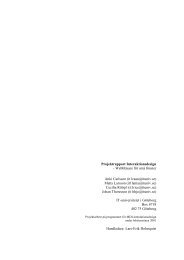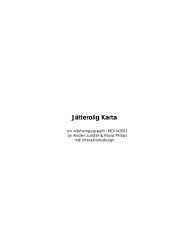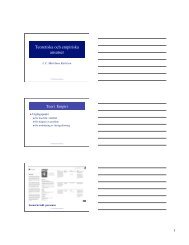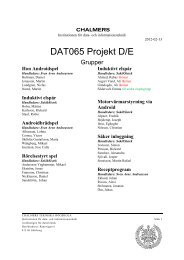Compiling Grammar-based Speech Application ... - CiteSeerX
Compiling Grammar-based Speech Application ... - CiteSeerX
Compiling Grammar-based Speech Application ... - CiteSeerX
You also want an ePaper? Increase the reach of your titles
YUMPU automatically turns print PDFs into web optimized ePapers that Google loves.
<strong>Speech</strong> Recognition <strong>Grammar</strong> Compilation in Grammatical Framework 33<br />
If desired, the set of automata can be converted into a single automaton<br />
by substituting each category-labeled edge with a copy of the corresponding<br />
automaton. Note that this always terminates, since the sub-automata do not<br />
have edges labeled with the categories from the same mutually recursive set.<br />
Minimization Each of the automata is turned into a minimal deterministic<br />
finite automaton (DFA) by using Brzozowski’s (1962) algorithm, which minimizes<br />
the automaton by performing two determinizations and reversals.<br />
Conversion to output format The resulting finite automaton can be output<br />
in HTK Standard Lattice Format (SLF). SLF supports sub-lattices, which allows<br />
us to convert our set of automata directly into a set of lattices. Since SLF uses<br />
labeled nodes, rather than labeled edges, we move the labels to the nodes. This is<br />
done by first introducing a new labeled node for each edge, and then eliminating<br />
all internal unlabeled nodes. Figure 4 shows the SLF model generated from the<br />
example grammar. For clarity, the sub-lattices have been inlined.<br />
and one<br />
START<br />
two<br />
small<br />
large<br />
small<br />
large<br />
beer<br />
pizza<br />
beers<br />
pizzas<br />
END<br />
Figure 4. SLF model generated from the grammar in Figure 2.<br />
5.2 Discussion<br />
Finite-state models are even more restrictive than context-free grammars. This<br />
problem is handled by approximating the context-free grammar with an overgenerating<br />
finite-state automaton. This may lead to failure in a subsequent<br />
parsing step, which, as in the context-free case, is acceptable if the recognizer<br />
can return all hypotheses.<br />
6 Semantic Interpretation<br />
Semantic interpretation can be done as a separate parsing step after speech<br />
recognition, or it can be done with semantic information embedded in the speech<br />
recognition grammar. The latter approach resembles the semantic actions used



